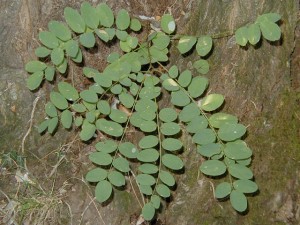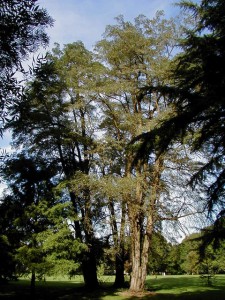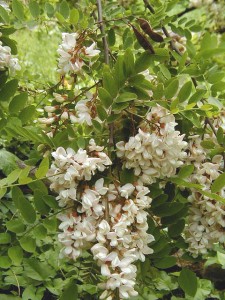Genus: Robinia
Family: Fabaceae
Often an upright tree with a straight trunk, the black locust becomes ragged and scraggly with age. The leaf color is dull, dark blue-green with leaves showing a slight yellow-green in fall. This tree can survive under the toughest of conditions and, like alders, it can “fix” nitrogen from the air, making it a useful tree for improving soil conditions. The Europeans have grown, appreciated, and selected superior forms of this tree, while some Americans treat it as a weed. A native of the central and southern Appalachian Mountains, it has naturalized in much of the Pacific Northwest. Its wood is highly resistant to decay and is often used for fenceposts.
In addition to the trees shown on these maps, there is a row of old black locusts along the north edge of the Reed canyon, between the footbridge and the springs. Over the past decades, many of the trees have fallen over into the lake, but they are still very alive and they offer a great close-up view of the locust flowers and foliage.


